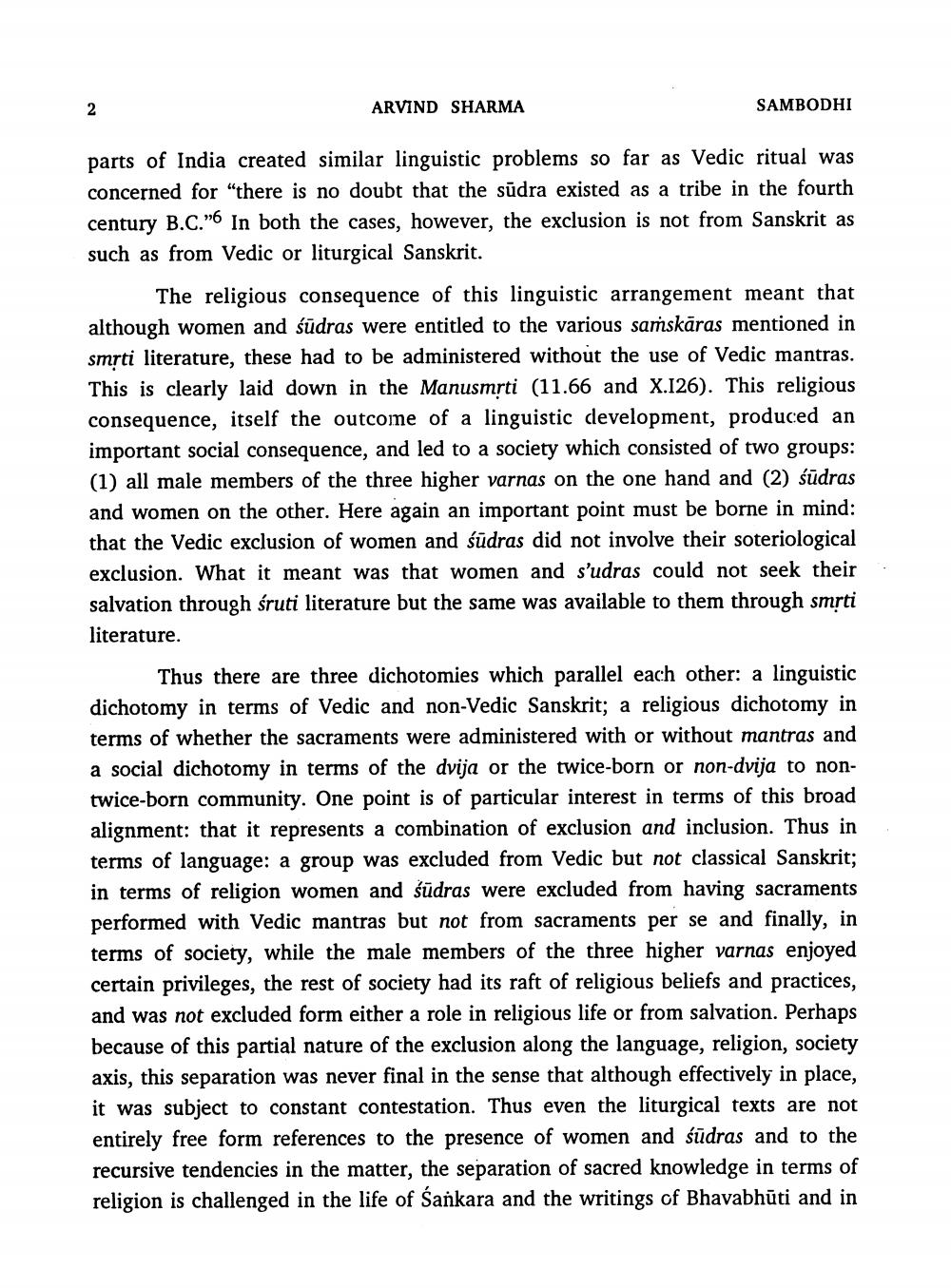Book Title: Sambodhi 2007 Vol 31 Author(s): J B Shah Publisher: L D Indology Ahmedabad View full book textPage 8
________________ ARVIND SHARMA SAMBODHI parts of India created similar linguistic problems so far as Vedic ritual was concerned for “there is no doubt that the sūdra existed as a tribe in the fourth century B.C.". In both the cases, however, the exclusion is not from Sanskrit as such as from Vedic or liturgical Sanskrit. The religious consequence of this linguistic arrangement meant that although women and sūdras were entitled to the various saṁskāras mentioned in smrti literature, these had to be administered without the use of Vedic mantras. This is clearly laid down in the Manusmrti (11.66 and X.126). This religious consequence, itself the outcome of a linguistic development, produced an important social consequence, and led to a society which consisted of two groups: (1) all male members of the three higher varnas on the one hand and (2) śūdras and women on the other. Here again an important point must be borne in mind: that the Vedic exclusion of women and sūdras did not involve their soteriological exclusion. What it meant was that women and s'udras could not seek their salvation through śruti literature but the same was available to them through smrti literature. Thus there are three dichotomies which parallel each other: a linguistic dichotomy in terms of Vedic and non-Vedic Sanskrit; a religious dichotomy in terms of whether the sacraments were administered with or without mantras and a social dichotomy in terms of the dvija or the twice-born or non-dvija to nontwice-born community. One point is of particular interest in terms of this broad alignment: that it represents a combination of exclusion and inclusion. Thus in terms of language: a group was excluded from Vedic but not classical Sanskrit; in terms of religion women and šūdras were excluded from having sacraments performed with Vedic mantras but not from sacraments per se and finally, in terms of society, while the male members of the three higher varnas enjoyed certain privileges, the rest of society had its raft of religious beliefs and practices, and was not excluded form either a role in religious life or from salvation. Perhaps because of this partial nature of the exclusion along the language, religion, society axis, this separation was never final in the sense that although effectively in place, it was subject to constant contestation. Thus even the liturgical texts are not entirely free form references to the presence of women and sūdras and to the recursive tendencies in the matter, the separation of sacred knowledge in terms of religion is challenged in the life of Sankara and the writings of Bhavabhūti and inPage Navigation
1 ... 6 7 8 9 10 11 12 13 14 15 16 17 18 19 20 21 22 23 24 25 26 27 28 29 30 31 32 33 34 35 36 37 38 39 40 41 42 43 44 45 46 47 48 49 50 51 52 53 54 55 56 57 58 59 60 61 62 63 64 65 66 67 68 69 70 71 72 73 74 75 76 77 78 79 80 81 82 ... 168
